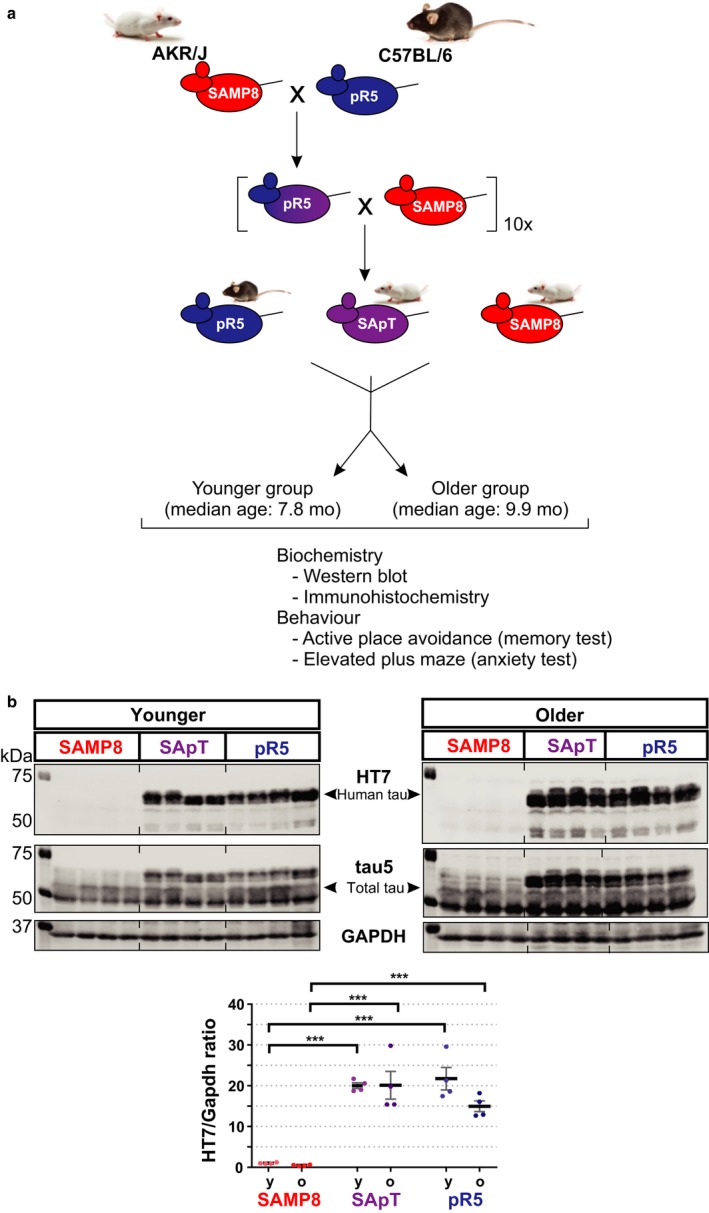Figure 1.

Generation of the senescence‐accelerated phospho‐tau strain (SApT) and experimental design. (a) SApT mice were obtained by backcrossing the pR5 strain (C57BL/6, black coat) expressing human p301L mutant tau onto the senescence‐accelerated prone SAMP8 background (AKR/J, white coat) for at least 10 generations before analysis. Mice were randomly divided into a younger group and an older group based on their age and were used for biochemical and behavioural analyses; (b) representative HT7, tau5 and Gapdh Western blots, and quantification of the HT7‐positive bands showing the expression of human tau in the SApT and pR5 mouse lines in the two age groups assessed; y: younger group; o: older group; 2×ANOVA multiple comparisons with a Tukey's post hoc test; ***P < 0.001; N = 4; data presented as mean ± SEM.
